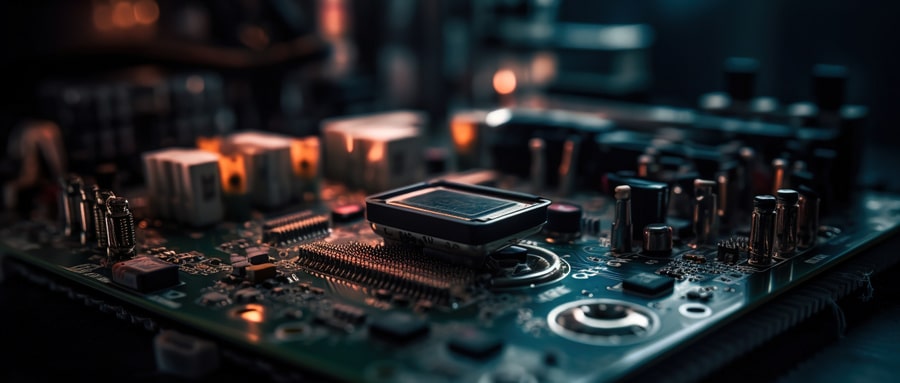Understanding PCB Layer Stackup: Design Considerations and Benefits
PCB layer stackup is an integral aspect of electronic design, impacting performance, reliability, and manufacturing of printed circuit boards. Here, we explore its fundamentals, importance, and how to select an ideal configuration.
Significance of PCB Layer Stackup
- Signal Integrity: Layer stackup plays a direct role in signal integrity for high-speed circuitry, providing protection from electromagnetic interference and crosstalk while controlling impedance to ensure reliable signal transmission.
- Thermal Management: PCB layer stackup plays an essential part in managing heat dissipation. By including thermal planes or copper pours into its design, heat can be effectively distributed and removed from critical components to create optimal temperature conditions.
- Impedance Control: An efficient layer stackup can help provide controlled impedance values across transmission lines for consistent signal characteristics and impedance levels. Arranging suitable layers and selecting suitable materials help reach desired values for impedance control.
- Power Integrity: Layer stackup can greatly impact power integrity in complex designs with multiple power domains. By allocating individual layers for power and ground planes, voltage drops, noise, and crosstalk can be reduced substantially, assuring stable power delivery.
- Manufacturability: The layer stackup configuration plays an integral part in determining the manufacturability of PCBs, including drilling accuracy, registration alignment, and layer-to-layer registration – aspects critical to successful fabrication and assembly processes.
Considerations When Selecting PCB Layer Stackup Options
- Understand Your Design Requirements: Assess the specific requirements of your design, such as number of signal layers and power domains required as well as impedance requirements. Additionally, establish whether specific layers should be dedicated solely for ground or power plane use.
- Signal Integrity Considerations: Care should be taken to satisfy controlled impedance requirements, reduce length and number of high-speed signal traces and evaluate layer arrangements to minimise impedance mismatches for maximum signal quality.
- Thermal Management Requirements: Assess the power dissipation needs of components and determine their need for thermal planes or copper pours for effective heat dissipation and distribution. Place them strategically so as to achieve efficient heat dispersion.
- Stack Symmetry and Distributions: It is best to aim for stack symmetry when it comes to mechanical and electrical stress distribution across your board, and maintaining an even distribution of layers can help control warping, reduce signal skew, and ensure balanced impedance.
- Material Selection: Select appropriate materials with suitable dielectric constants, thermal conductivity and glass transition temperatures that meet your design specifications. Working closely with your PCB manufacturer, select materials that align with your stackup configuration.
- Manufacturing Constraints: Carefully consider the capabilities and limitations of your chosen PCB manufacturer when considering manufacturing constraints for your project. Confirm their maximum layer count, minimum feature sizes, drilling requirements, lamination process requirements or registration alignment needs.
Optimizing PCB Layer Stackup
- Seek Out Expert Advice: For optimal layer stackup optimization, seek advice from experienced PCB designers or manufacturers who can offer recommendations based on their knowledge of materials, layer layout and manufacturing techniques.
- Comprehensive Design Review: Conduct a detailed design review in order to identify any potential problems, such as impedance mismatches, high-speed signal routing challenges or thermal hotspots. Address these concerns through layer stack up adjustments if necessary.
- Utilize Simulation Tools: Signal integrity and thermal analysis simulation tools can be utilized to assess the performance of layer stackups, validating design choices while helping optimize them for desired electrical and thermal characteristics.
- Prototype and Test: Create and test prototypes to evaluate the functionality and performance of your layer stackup. Adapt any necessary modifications based on test results in order to optimize design quality and increase overall performance.

Consider factors like signal integrity, thermal management, manufacturability and design requirements when developing an optimized PCB layer stackup that meets your specific requirements. A well-crafted stackup contributes to enhanced signal integrity, thermal performance and overall reliability in electronic designs.
FAQ:
- What is a PCB layer stackup?
A PCB layer stackup refers to the arrangement of copper layers and insulating layers that make up a PCB. The stackup can vary, from simple two-layer boards to complex multi-layered boards. - Why is understanding PCB layer stackup important?
The layer stackup configuration impacts the performance and functionality of the PCB. It affects signal integrity, power distribution, electromagnetic compatibility, and thermal management. - What is a typical 2-layer PCB stackup?
A typical 2-layer PCB layer stack consists of a signal layer at the top, a core (substrate), and a signal layer at the bottom. - What is a typical 4-layer PCB stackup?
A typical 4-layer PCB consists of signal layer, ground plane, power plane, and signal layer from top to bottom. - How is the PCB stackup determined?
The PCB stackup is dictated by the complexity of the design, the required impedance, the electrical requirements of the circuits, and the limitations of the manufacturing process. - Can I change the PCB Stackup in the middle of the design process?
It’s possible, but not advisable. Changing the stackup can alter the performance and functionality of the PCB. It’s recommended to finalize the stackup before the design process begins. - What is a buried and blind via in PCB Stackup?
Buried vias connect internal layers and are completely hidden within the PCB. Blind vias connect an outer layer to at least one inner layer and end inside the PCB. - What is the importance of PCB Stackup in high-speed designs?
In high-speed designs, the PCB stackup can significantly impact signal integrity. Poor stackup can lead to issues like cross-talk and EMI. The correct stackup can improve signal quality and overall circuit performance. - What are impedance controlled stackups?
Impedance controlled stackups are designs where certain physical parameters are determined to achieve a specific characteristic impedance. These are often used in high-speed and RF circuits. - How to choose the right PCB layer stackup?
The right stackup depends on various factors including the application, signal speeds, power requirements, thermal considerations, cost limitations, and manufacturing capabilities.























